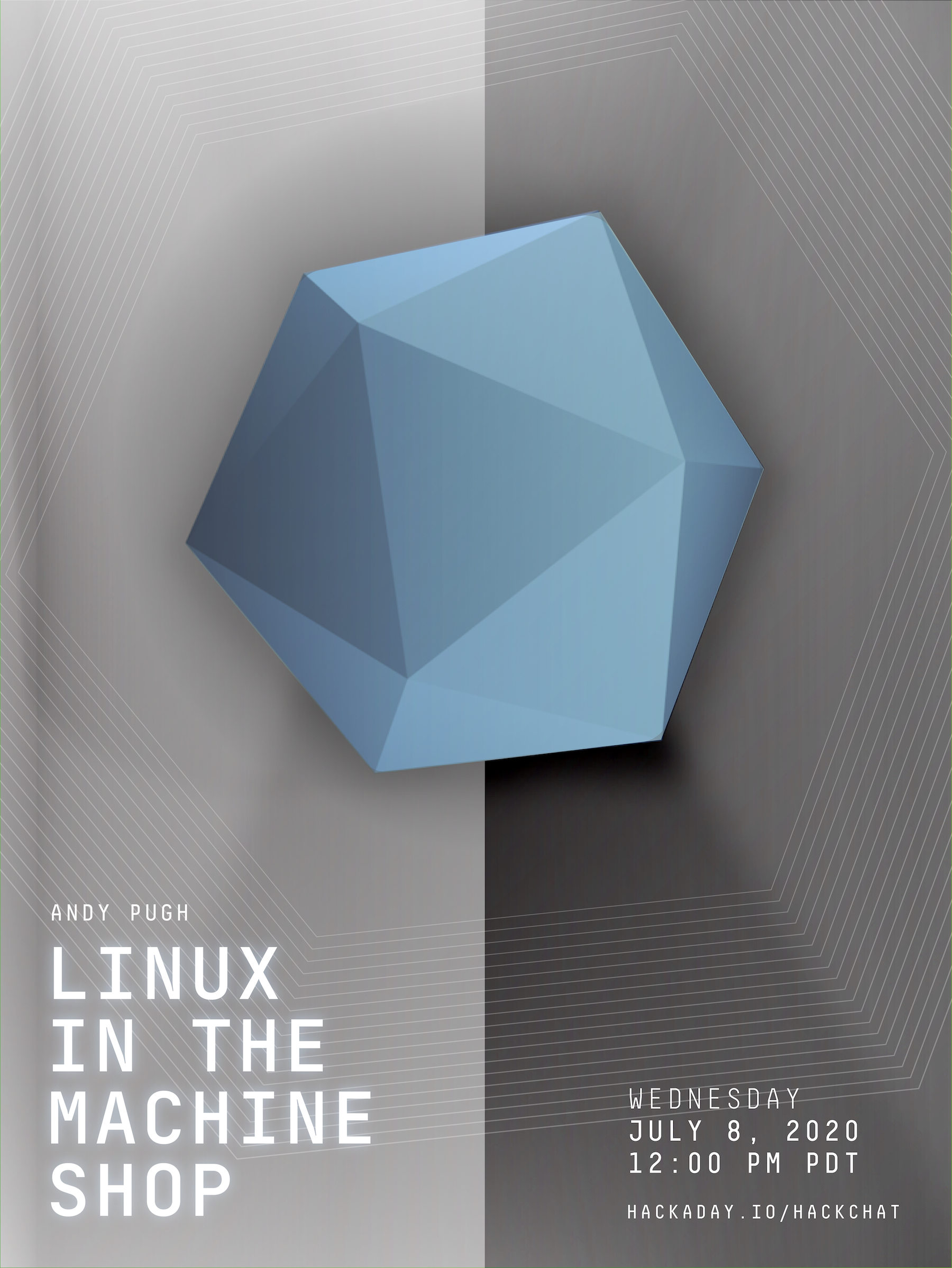Andy Pugh will host the Hack Chat on Wednesday, July 8, 2020 at noon Pacific Time.
Time zones got you down? Here's a handy time converter!

From the time that numeric control started making inroads into machine shops in the middle of the last century until relatively recently, the power of being able to control machine tools with something other than a skilled human hand was evident. Unfortunately, the equipment to do so was expensive, and so NC technology remained firmly in the big shops, where a decent return on investment could be realized.
Fast forward a few decades, and everything that makes the computerized version of NC possible is cheap and easily available. Servos, steppers, drivers, and motion control components can be plugged together into CNC machines that can move a tool to a fixed point in space with incredible accuracy and repeatability. But without CNC software, none of it means a thing.
Enter Linux CNC, the free and open-source CNC package. With support for realtime operation, one-step installations, and a huge range of capabilities provided by a team of volunteer developers and a supported by an active community, Linux CNC has democratized the world of CNC machines.
Andy Pugh is a frequent contributor to the Linux CNC codebase and a moderator on the forum. He knows a thing or two about Linux CNC in particular and Linux in the machine shop in general. He'll stop by the Hack Chat to share his experiences with the Linux CNC project, tell us how Linux can revolutionize the machine shop, and maybe share a few stories of from the world of CAD, CAM, and using Linux to make a few chips.


 So it's the end of our hour, and we need to let Andy get back to work, or the shop as the case may be. Feel free to stay on and keep chatting, this has been hugely informative. I want to thank Andy for his time today, and everyone else for coming along for the ride.
So it's the end of our hour, and we need to let Andy get back to work, or the shop as the case may be. Feel free to stay on and keep chatting, this has been hugely informative. I want to thank Andy for his time today, and everyone else for coming along for the ride.









